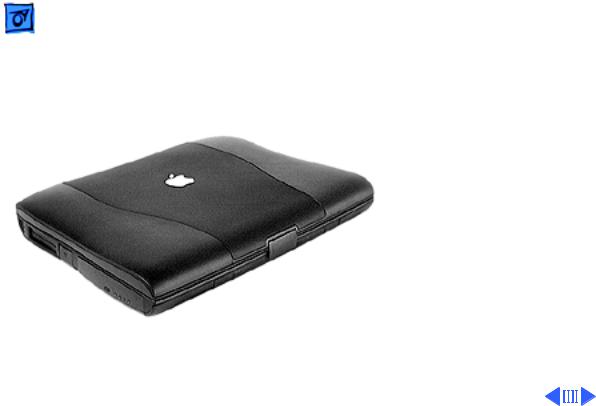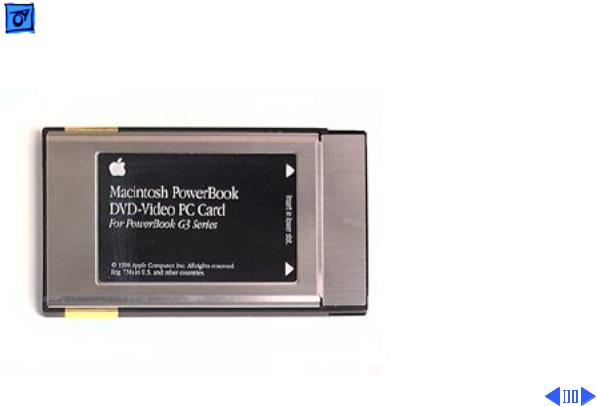Apple PowerBook G3 original series Service Manual

K Service Source
PowerBook G3 Series
M4753

K Service Source
Hot Issues
PowerBook G3 Series

Hot Issues |
Overview - 1 |
|
|
|
|
Overview
This chapter is designed to highlight unique or highpriority product issues that you should be aware of before servicing the PowerBook G3 Series computers.
This chapter alerts you to important issues and provides links to other areas in the manual where more complete information can be found. This chapter is not intended to replace other parts of this manual; it merely provides a pointer to pertinent information in those chapters.
To familiarize yourself with a new product family, always read the Basics chapter in its entirety.

Hot Issues |
Overview - 2 |
|
|
|
|
PowerBook G3 Series: Identifying PowerBook G3 Series Circuit Boards
Discussion: When replacing PowerBook G3 Series circuit boards it is very important to check the ID codes to verify that you are ordering the correct part.
The ID codes listed below can be found within the serial numbers that are attached to the circuit boards. They are not part of the whole unit serial number that is attached to the bottom of the PowerBook.
These serial numbers can be located in the following locations.
• Microprocessor Board: Follow the instructions in Service Source for removing the microprocessor card. With the card removed, look at the serial number/bar code label on the SODIMM conector on the bottom side of the card.

Hot Issues Overview - 3
• I/O Logic Board: This serial number label is viewable from the opening for the PC Card slots. You don’t need to disassemble the PowerBook. Gently push in the PC Card slot doors and look inside the opening. You should see the serial number/bar code label. You may need to use a small flashlight to see the lettering on the label.
The ID codes are printed in one of two ways:
– Either the next-to-last three characters in the serial number. For example, if the serial number is *CK8xxxxxyyyx* then the ID code would be “yyy”.
– Or within the last 5 characters of the serial number. For example, if the serial number is *KC8xxxxxxyyyxx* then the ID code would be “yyy”. This type of serial number label has Singapore printed directly after the serial number.

Hot Issues |
Overview - 4 |
|
|
|
|
Exchange Parts Like for Like
Unless directed otherwise in the Service Parts Database, exchange parts like for like. Refer to the following table for the listing of ID Codes.
Microprocessor Board
|
Description |
Service |
ID Code |
|
|
Part # |
|
|
|
|
|
233 MHz/0 cache |
661-2035 |
BKF |
|
|
|
|
|
233 |
MHz/512K cache |
661-2089 |
DW3, ERN |
|
|
|
|
250 MHz/1 M cache |
661-2036 |
BKE |
|
|
|
|
|
266 |
MHz/1 M cache |
661-2097 |
EE8 |
|
|
|
|
292 |
MHz/1 M cache |
661-2021 |
BAD |
|
|
|
|
300 |
MHz/1 M cache |
661-2088 |
DW4 |
|
|
|
|

Hot Issues |
Overview - 5 |
|
|
|
|
|
. |
|
I/O Logic Board
Description |
Service |
ID |
|
|
|
Part # |
Code |
|
|
|
|
|
|
|
2 MB SGRAM, no TV out |
661-2058 |
BKG, |
|
|
|
|
DGK, |
|
|
|
|
DFL |
|
|
|
|
|
|
|
2 MB SGRAM, TV out |
661-2094 |
DW6 |
|
|
|
|
|
|
|
|
|
|
|
|
|
|
|
|
|

 Hot Issues Intermittent Video with 13.3” Display - 6
Hot Issues Intermittent Video with 13.3” Display - 6
Intermittent Video with 13.3” Display
Customers may describe symptoms related to intermittent video when using PowerBook G3 Series computers configured with the 13.3* display. Reported symptoms may include one of the following:
• intermittent vertical lines
• flickering of the video
• the screen may fade to white.
These symptoms may be caused by an intermittent connection between the internal display cable and the connector it attaches to on the display. If the customer experiences one of these symptoms the unit should be dispatched for replacement of the display cable. Replacement of the I/O logic board or the display are not necessary.

Hot Issues |
Intermittent Video with 13.3” Display - 7 |
|||
|
|
|
||
|
Service Providers are asked to contact Apple to arrange for |
|||
|
the unit to be dispatched to Apple’s Central Product Repair |
|||
|
Center. If customers wish, they may contact Apple to |
|||
|
arrange this dispatch themselves. |
|||
|
|
|
|
|
|
|
|
|
|

K Service Source
Basics
PowerBook G3 Series

Basics |
Product Overview - 1 |
|
|
|
|
Product Overview
The PowerBook G3 Series is the first PowerBook to offer build-to-order options that include a choice of microprocessor speed, internal hard disk, on-board RAM, and display size and type.
Note: The PowerBook G3 Series can be distinguished from other PowerBooks by its physical design and the family marketing number M4753 on the bottom product label.

Basics |
Product Overview - 2 |
|
|
|
|
Click the icon above to see a 360-degree view and some of the exterior features of the PowerBook G3 Series.
Features
The PowerBook G3 Series includes
• PowerPC G3 microprocessor running at clock speeds of 233, 250, 266, 292, or 300 MHz
• Backside L2 cache of up to1 MB of fast static RAM
• Two standard SO-DIMM expansion slots for SDRAM modules and 32 MB minimum of SDRAM installed, expandable to 192 MB total
• Built-in hard disk drives of 2 to 8 GB
• Choice of 13.3 or 14.1-inch TFT display with XGA resolution (1024 x 768 pixels), or 12.1-inch STN or TFT display with SVGA resolution (800 x 600 pixels)
• Standard VGA video connector for external video monitor with XGA resolution, or S-video connector that supports PAL and NTSC video monitors
• Either 2 MB or 4 MB of video SGRAM
• Built-in 2D and 3D graphics acceleration via video

Basics |
Product Overview - 3 |
|||
|
|
|
||
|
circuits |
|||
|
• Two expansion bays for batteries, floppy disk drive, CD- |
|||
|
ROM drive, DVD-ROM drive, and other IDE or PCI devices |
|||
|
• Two CardBus slots that accept one Type III or two Type II |
|||
|
CardBus cards or PC Cards |
|||
|
• Built-in Ethernet port with a 10BaseT connector |
|||
|
• Infrared link for up to 4 Mbit-per-second IrDA data |
|||
|
transfer |
|||
|
• Built-in modem with 56 kbps data rate in some |
|||
|
configurations (optional) |
|||
|
• Built-in microphone and speakers as well as a line-level |
|||
|
stereo input jack and a stereo headphone jack |
|||
|
• New keyboard design with an embedded numeric keypad |
|||
|
and inverted-T arrow keys |
|||
|
• New compact 45 watt AC adapter |
|||
|
|
|
|
|
|
|
|
|
|

Basics |
System Configurations - 4 |
|
|
|
|
System Configurations
At introduction in May, 1998, six basic configurations of the PowerBook G3 Series computer were available. With build-to-order options, customers may customize their PowerBook G3 Series computers in a variety of ways.
In September, 1998, five new configurations were introduced that feature three new processor cards and support resolution switching of the display. An additional configuration was added October 1. To determine whether the unit you are looking at is one of these later configurations, check the Apple System Profiler to see if the unit has a clock speed of 233 MHz with 512K cache, 266 MHz, or 300 MHz.
For more details on these configurations and on the build- to-order-options, see the Data Sheet at the end of the Specifications chapter of this manual.

 Basics System Configurations - 5
Basics System Configurations - 5
PowerBook G3 Series configurations introduced May, 1998
|
M6359LL/A |
M6477LL/A |
M6481LL/A |
Display |
12.1 STN |
12.1 STN |
13.3 TFT |
Processor Speed |
233 MHz |
233 MHz |
233 MHz |
Backside L2 Cache |
No |
No |
No |
Memory (SDRAM) |
32MB |
32MB |
32MB |
Video (SGRAM) |
2MB |
2MB |
4MB |
Hard Disk Drive |
2GB IDE |
2GB IDE |
2GB IDE |
Floppy Drive |
No |
Yes |
Yes |
CD-ROM Drive |
Yes |
Yes |
Yes |
K56flex Modem |
No |
Yes |
No |
S-video Out |
No |
No |
Yes |

Basics |
System Configurations - 6 |
|
|
|
|
PowerBook G3 Series configurations introduced May, 1998 (cont.)
|
M6357LL/A |
M6484LL/A |
M6541LL/A |
Display |
13.3 TFT |
14.1 TFT |
14.1 TFT |
Processor Speed |
250 MHz |
233 MHz |
292 MHz |
Backside L2 Cache |
1MB |
No |
1MB |
Memory (SDRAM) |
32MB |
32MB |
64MB |
Video (SGRAM) |
4MB |
4MB |
4MB |
Hard Disk Drive |
4GB IDE |
2GB IDE |
8GB IDE |
Floppy Drive |
Yes |
Yes |
Yes |
CD-ROM Drive |
Yes |
Yes |
Yes |
K56flex Modem |
Yes |
No |
Yes |
S-video Out |
Yes |
Yes |
Yes |

 Basics System Configurations - 7
Basics System Configurations - 7
PowerBook G3 Series configurations introduced September, 1998
|
|
|
|
|
|
|
M7229LL/A |
|
M6359LL/A |
M6477LL/A |
(October 1, 1998) |
|
|
|
|
Display |
12.1 STN |
12.1 STN |
12.1 TFT |
|
|
|
|
Processor Speed |
233 MHz |
233 MHz |
233 MHz |
|
|
|
|
Backside L2 Cache |
No |
No |
512K |
|
|
|
|
Memory (SDRAM) |
32MB |
32MB |
32MB |
|
|
|
|
Video (SGRAM) |
2MB |
2MB |
2MB |
|
|
|
|
Video Controller |
ATI Rage LT |
ATI Rage LT |
ATI Rage LT PRO |
|
|
|
|
Hard Disk Drive |
2GB IDE |
2GB IDE |
2GB IDE |
|
|
|
|
CD-ROM Drive |
Yes |
Yes |
Yes |
|
|
|
|
K56flex Modem |
No |
Yes |
No |
|
|
|
|
S-video Out |
No |
No |
Yes |
|
|
|
|

Basics |
System Configurations - 8 |
|
|
|
|
PowerBook G3 Series configurations introduced September, 1998 (cont.)
|
M7109LL/A |
M7110LL/A |
M7111LL/A |
Display |
14.1 TFT |
14.1 TFT |
14.1 TFT |
Processor Speed |
233 MHz |
266 MHz |
300 MHz |
Backside L2 Cache |
512K |
1MB |
1MB |
Memory (SDRAM) |
32MB |
64MB |
64MB |
Video (SGRAM) |
4MB |
4MB |
4MB |
Video Controller |
ATI Rage LT PRO |
ATI Rage LT PRO |
ATI Rage LT PRO |
Hard Disk Drive |
2GB IDE |
4GB IDE |
8GB IDE |
CD-ROM Drive |
Yes |
Yes |
No |
DVD-ROM Drive |
No |
No |
Yes |
K56flex Modem |
Yes |
Yes |
Yes |
S-video Out |
Yes |
Yes |
Yes |

Basics |
DVD-Video PC Card Option - 9 |
|
|
|
|
DVD-Video PC Card Option
The DVD-Video PC card is an option that was introduced in July, 1998 for the PowerBook G3 Series. Together with its software, the DVD-Video PC card provides DVD-Video playback capabilities for PowerBook G3 Series computers equipped with a DVD-ROM expansion bay module.
DVD discs are similar to music CDs and CD-ROM

Basics |
DVD-Video PC Card Option - 10 |
|
|
|
|
Click the icon above for the DVD-Video PC Card operation and installation manual.
discs, but they can hold up to 25 times the amount of data. This greater capacity allows an entire movie to be stored on a single disc, usually with extra storage space left over. Some DVD-Video discs use the additional storage space for different language tracks, extra video clips, and director’s notes.
Important: Audio and video quality varies extensively among DVD-Video disc titles. Symptoms that suggest a DVDVideo PC card failure could actually be caused by a damaged or poorly manufactured DVD-Video disc. To avoid needless DVD-Video PC card replacement, we suggest testing at least two DVD-Video disc titles to see if the symptom persists. For troubleshooting procedures, refer to “DVD-Video PC Card” in the Troubleshooting chapter.
For DVD specifications refer to the DVD data sheet that follows the Specifications chapter in this manual.

Basics |
Repair Strategy - 11 |
|
|
|
|
Repair Strategy
In the US only, refer to the latest program notice for special service considerations. Beginning September 1, 1998, parts for the PowerBook G3 Series will be available for order through the Service Price Pages and the AppleOrder and ARIS systems. Except for the displays, Apple Authorized Service Providers in the US can now repair PowerBook G3 Series systems. In Canada, Apple Authorized Service Providers can also repair displays.
Because of the complexity of the repairs, we are limiting all PowerBook G3 Series display repairs, except for repairing the latch, to the Central Product Repair Center (CPRC). This includes the 12.1" STN display. On PowerBook G3 Series 12.1” STN displays, the EMI shield is prone to tearing and may not fit correctly after reassembly (refer to the Additional Procedures chapter for more information).

Basics |
Repair Strategy - 12 |
|
|
|
|
|
Service the PowerBook G3 Series computers through module |
|
|
exchange and parts replacement. Customers can request on- |
|
|
site service from an Apple Authorized Service Provider Plus |
|
|
(AASP+), Apple Assurance (US only), or Apple Canada |
|
|
Technical Answerline (Canada only). They can also choose |
|
|
carry-in service from an AASP. |
|
Ordering
Apple Service Providers planning to support the computer systems covered in this manual may purchase Service modules and parts to develop servicing capability. To order parts, use the AppleOrder (US only) or ARIS (Canada only) system and refer to the PowerBook G3 Series “Service Price Pages.”
Large businesses, universities, and K-12 accounts must provide a purchase order on all transactions, including

Basics |
Repair Strategy - 13 |
|
|
|
|
|
orders placed through the AppleOrder (US only) or ARIS |
|
|
(Canada only) system. |
|
US Ordering
US Service providers not enrolled in AppleOrder may fax their orders to Service Provider Support (512-908- 8125) or mail them to
Apple Computer, Inc. Service Provider Support MS 212-SPS
Austin, TX 78714-9125
For US inquiries, please call Service Provider Support at 800-919-2775 and select option #1.

Basics |
Repair Strategy - 14 |
|
|
|
|
Canadian Ordering
In Canada, all service parts (including the displays) are available through ARIS. Refer to the Service Price Pages or Service Source Online for part numbers and pricing.
Canadian Service Providers not enrolled in ARIS may fax their orders to Service Provider Support in Canada (1- 800-903-5284). For Canadian inquiries, please call Service Provider Support at 905-513-5782 and select option #3.

Basics |
Warranty/AppleCare/ARIS - 15 |
|
|
|
|
Warranty/AppleCare/ARIS
US Only
The PowerBook G3 Series computers are covered under the Apple One-Year Global Limited Warranty. The AppleCare Service Plan is also available for these products. Service Providers are reimbursed for warranty and AppleCare repairs made to these computers. For pricing information, refer to “Service Price Pages.”
Canada Only
The PowerBook G3 Series computers are covered under first-year AppleCare. The Extended AppleCare Service Plan is also available for these products. Service Providers are reimbursed for warranty and AppleCare repairs made to these computers. For pricing information, refer to “Service Price Pages.”

Basics |
Repair Issues - 16 |
|
|
|
|
Repair Issues
Prevent Cosmetic Damage
The outside plastics of the PowerBook G3 Series computers are vulnerable to scratches and finger marks from skin oil. To prevent cosmetic damage to a customer’s PowerBook, do not wear jewelry when handling the computer, and wear gloves if you have them available. Wipe fingerprints from the outside plastics with a damp cloth.
Install Microprocessor Board Securely
The microprocessor board can be partially inserted and the computer will still function. However, over time, heat will cause the microprocessor board to lose contact and can cause the system to have intermittent problems such as no booting.

Basics |
Repair Issues - 17 |
|
|
|
|
|
Therefore, verify proper installation by pressing on the |
|
|
microprocessor board connector a second time to make sure |
|
|
the board is fully seated. |
|
Verify Parts Before Placing Orders
The PowerBook G3 Series computers offer build-to-order features. For this reason, it is mandatory that you either see the part you are replacing, or use diagnostics to identify the part, before you place a parts order. Misidentification of parts may occur if this step is not performed first.
Exchange Parts Like for Like
Unless directed otherwise in the Service Parts Database, exchange parts like for like. Refer to the following table for special part considerations.

|
Basics |
|
|
|
Repair Issues - 18 |
||
|
|
|
|
|
|
|
|
|
|
|
PowerBook G3 Series Part ID Codes |
||||
|
|
|
|
|
|
|
|
|
|
|
|
Service Part |
ID Code or |
|
|
Part |
Description |
Number |
Characteristic |
|
|||
|
|
|
|
|
|||
Microprocessor |
233 MHz/0 cache |
661-2035 |
BKF |
|
|
||
Board |
233 |
MHz/512K cache |
661-2089 |
DW3, ERN |
|
||
|
|
250 |
MHz/1 M cache |
661-2036 |
BKE |
|
|
|
|
266 |
MHz/1 M cache |
661-2097 |
EE8 |
|
|
|
|
292 |
MHz/1 M cache |
661-2021 |
BAD |
|
|
|
|
300 |
MHz/1 M cache |
661-2088 |
DW4 |
|
|
|
|
|
|
|
|||
I/O Logic Board |
2 MB SGRAM, no TV out, ATI Rage LT |
661-2058 |
BKG, DGK, DFL |
|
|
||
|
|
2 MB SGRAM, TV out, ATI Rage Pro |
661-2094 |
DW6 |
|
||
|
|
4 MB SGRAM, TV out, ATI Rage Pro |
661-2087 |
DW7 |
|
||
|
|
4 MB SGRAM, TV out, ATI Rage LT |
661-2019 |
B9B, DGL, DFM |
|
||
|
|
|
|
|
|||
Modem |
56K, Americas, GV |
661-1504 |
white insulator |
|
|
||
|
|
K56flex/V.90, North America/Asia |
661-2098 |
E3J |
|
||
|
|
|
|
|
|||
Battery |
Bottom and side shims |
661-2069 |
AXW or E7L |
|
|
||
|
|
Bottom shim only |
661-2069 |
E3W or E7M |
|
||
|
|
|
|
|
|
|
|

Basics |
Repair Issues - 19 |
|
|
|
|
|
Note: ID codes are in the last five digits of the serial number |
|
|
on the component or part. To see the I/O logic board serial |
|
|
number, turn the top of the unit toward you, push in on the |
|
|
PC Card door, and look down at the bottom case. |
|
I/O Logic Board Identification
There are two I/O logic boards with both TV out and 4 MB of
SGRAM. Look for these differences to differentiate them:
• 661-2019 has components at locations U8 and U9 on the top of the board under the microprocessor board, and an ATI Rage LT chip on the bottom of the board.
• 661-2087 has no components at locations U8 and U9 on the top of the board under the microprocessor board, and has an ATI Rage Pro chip on the bottom of the board.

Basics |
Repair Issues - 20 |
|
|
|
|
Microprocessor and I/O Logic Board Compatibility
I/O logic boards and microprocessor boards shipped in early PowerBook G3 Series computers are not compatible with those shipped later and should not be used together. Refer to the chart below to check compatibility when replacing these parts.
Table 1: Microprocessor—I/O Logic Board Compatibility Chart
|
661-2019 |
661-2058 |
661-2087 |
661-2094 |
||
|
|
|
|
|
||
661-2021 |
yes |
yes |
no |
yes |
||
|
|
|
|
|
||
661-2035 |
yes |
yes |
no |
yes |
||
|
|
|
|
|
||
661-2036 |
yes |
yes |
no |
yes |
||
|
|
|
|
|
||
661-2088 |
no |
no |
yes |
no |
||
|
|
|
|
|
||
661-2089 |
no |
no |
yes |
no |
||
|
|
|
|
|
||
661-2097 |
no |
no |
yes |
no |
||
|
|
|
|
|
|
|
|
|
|
|
|
|
|
